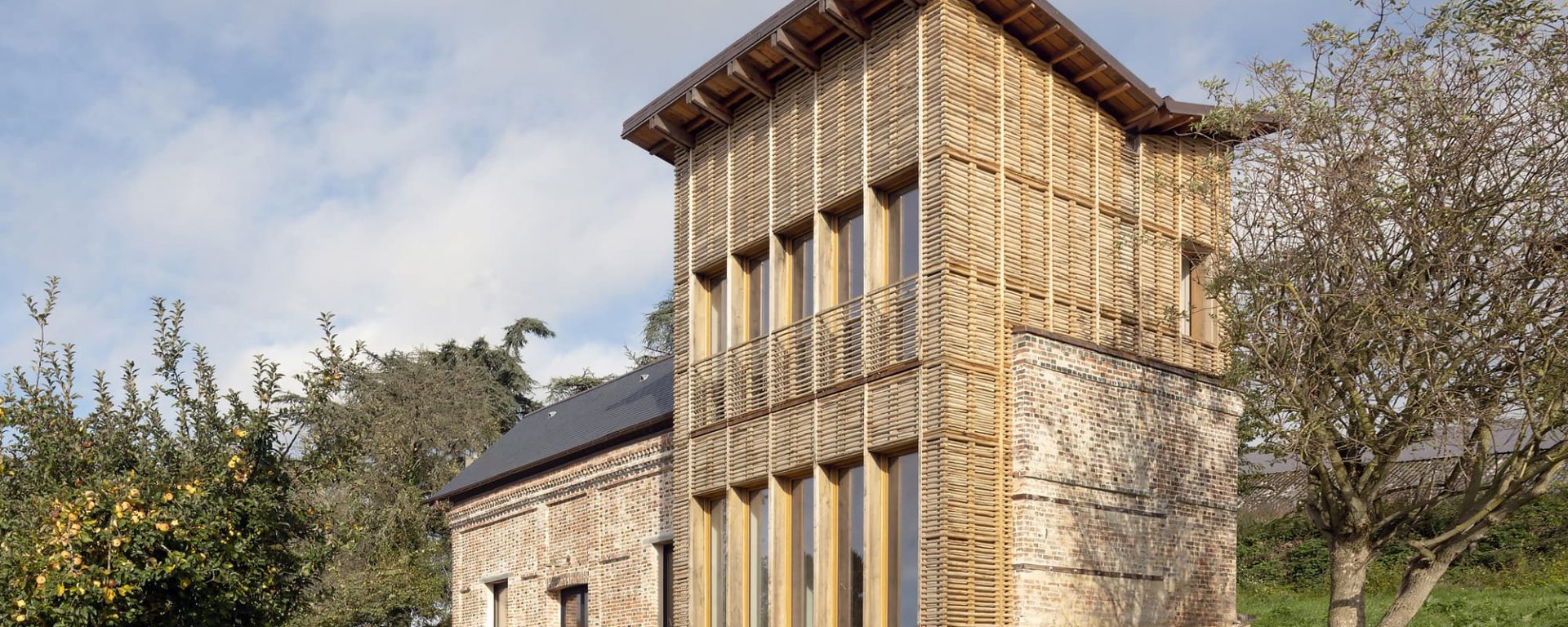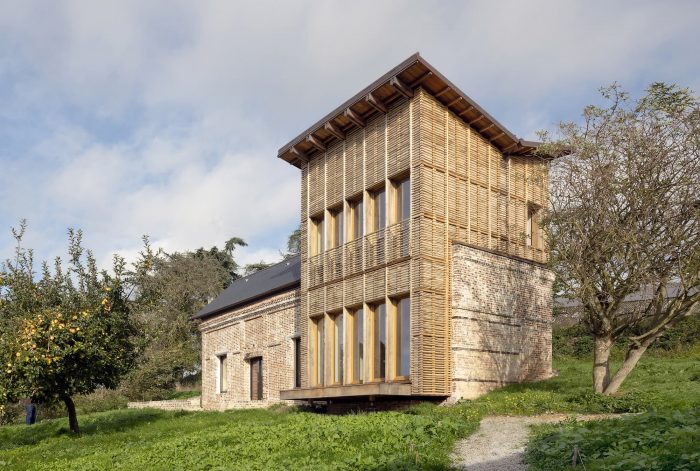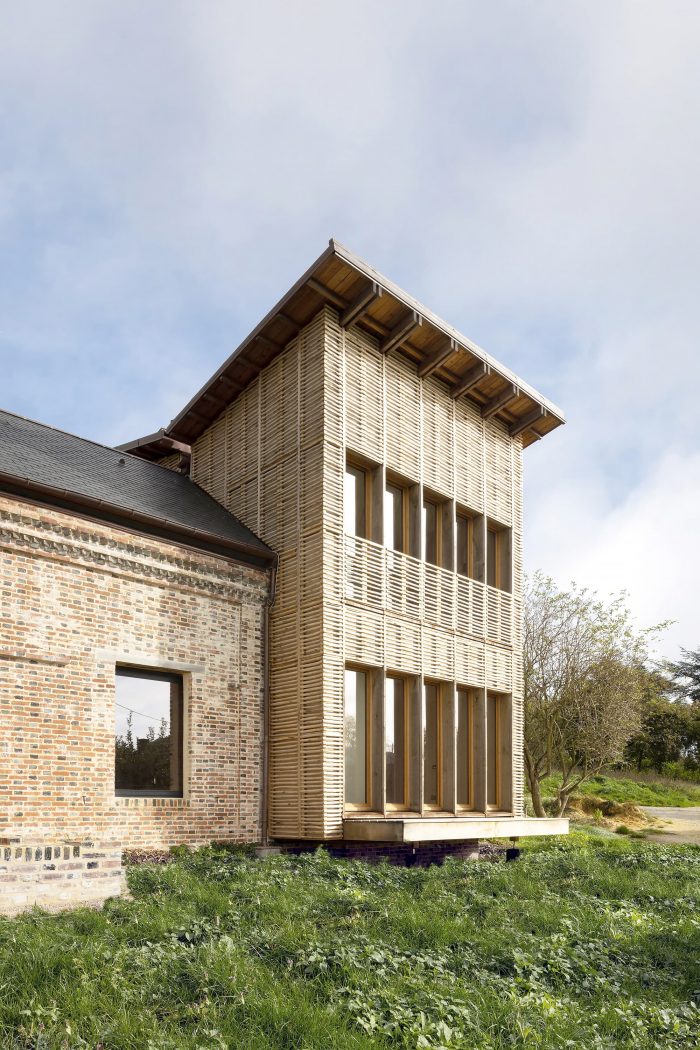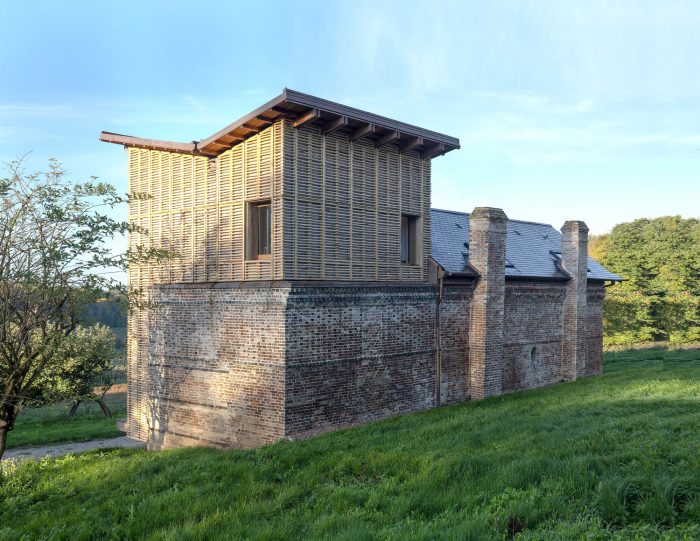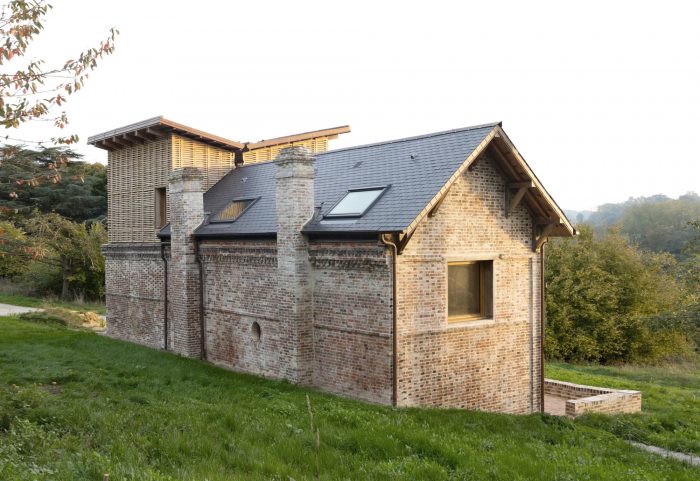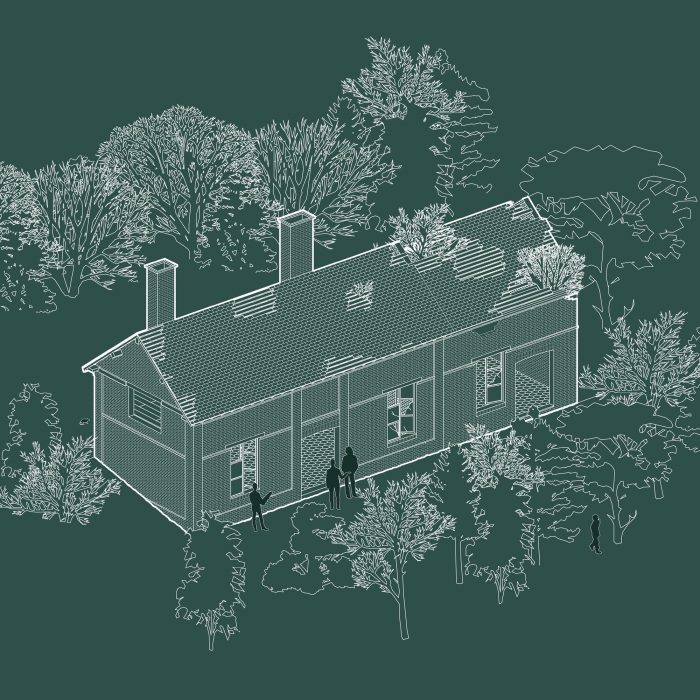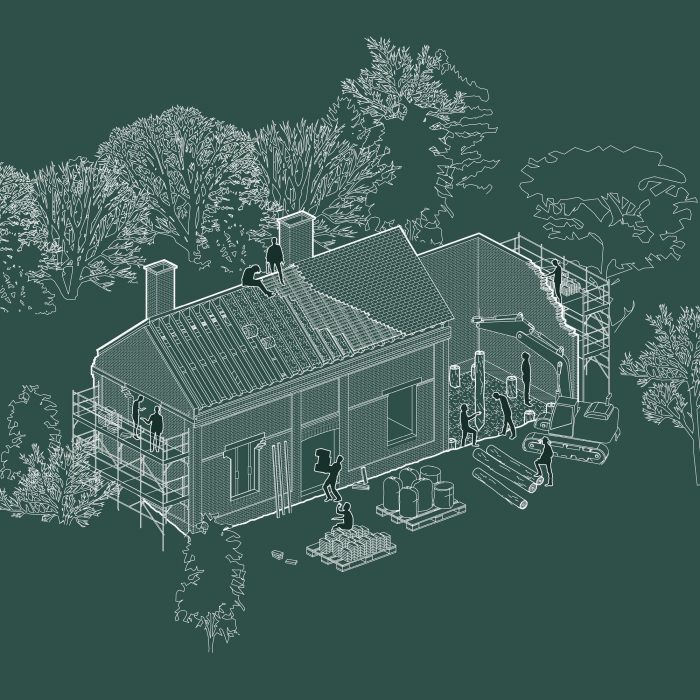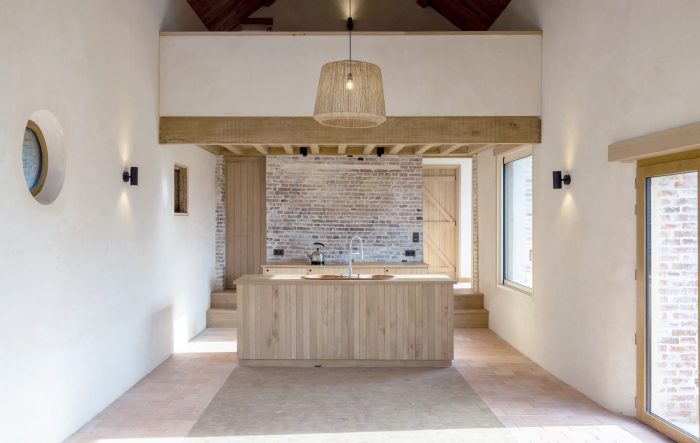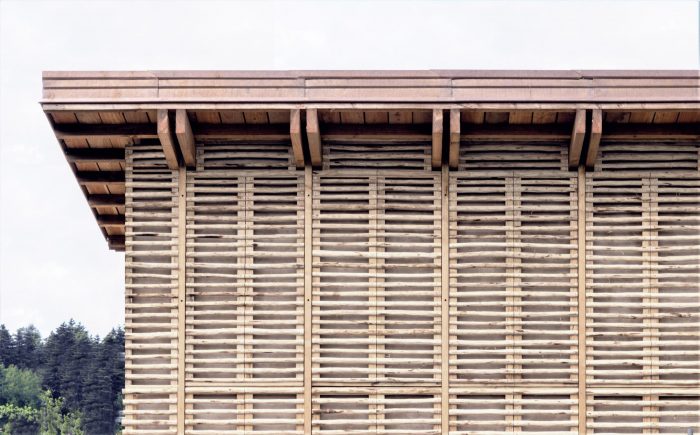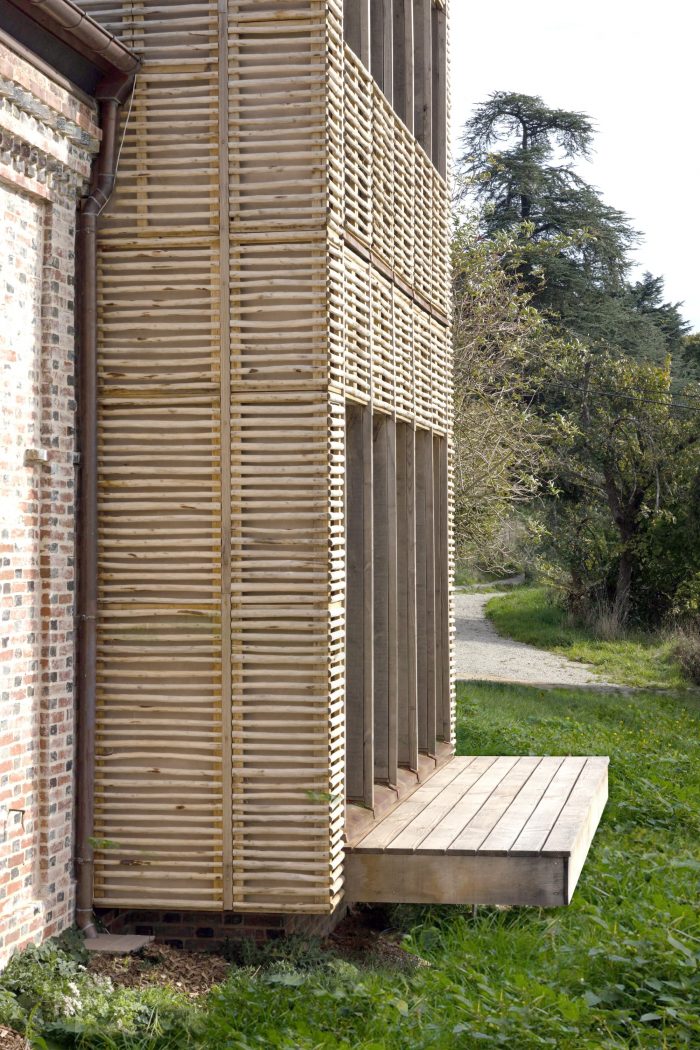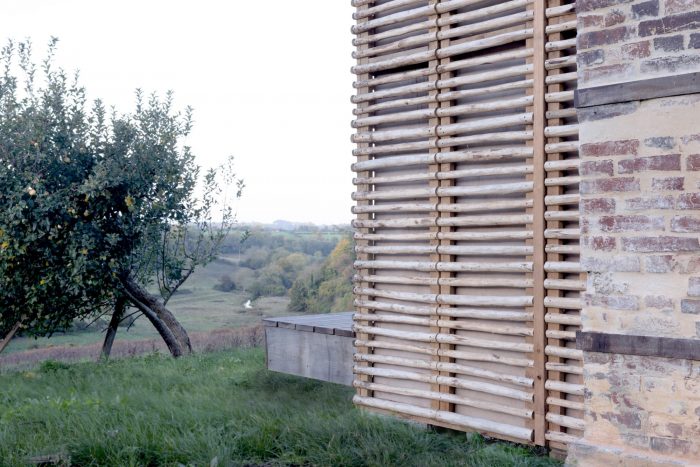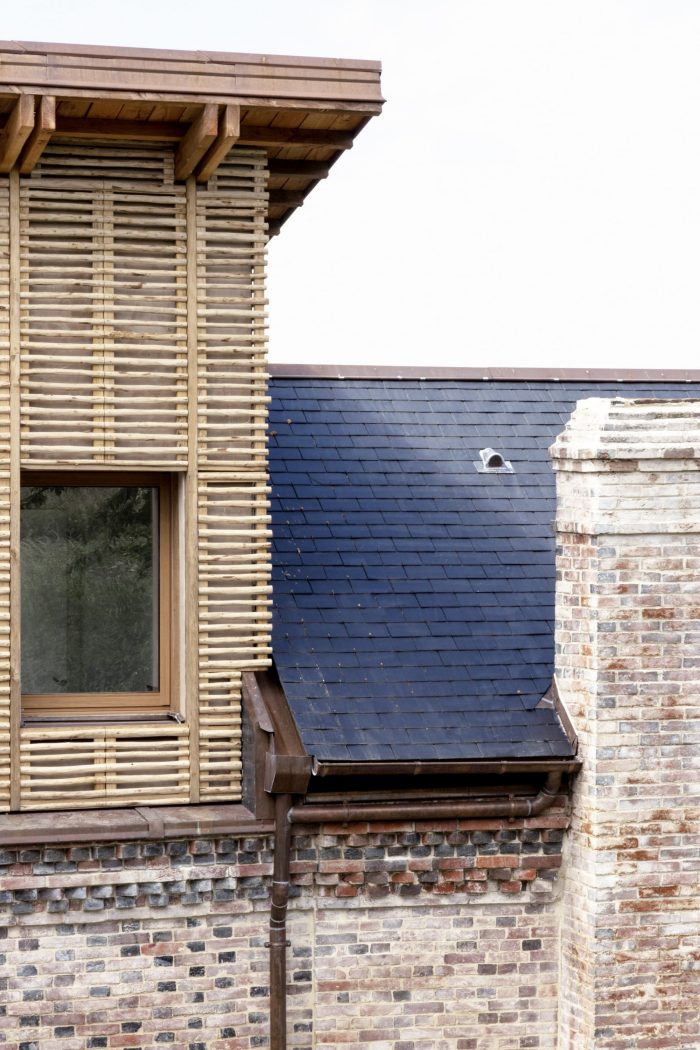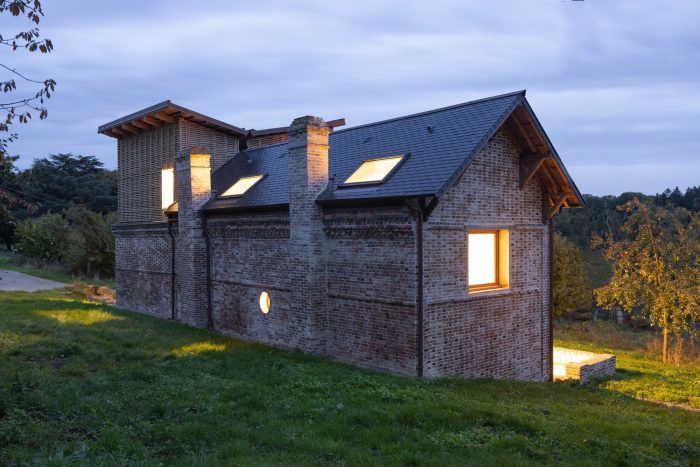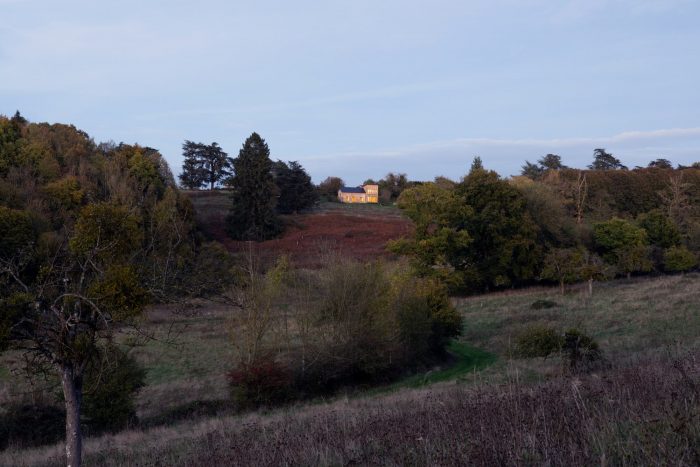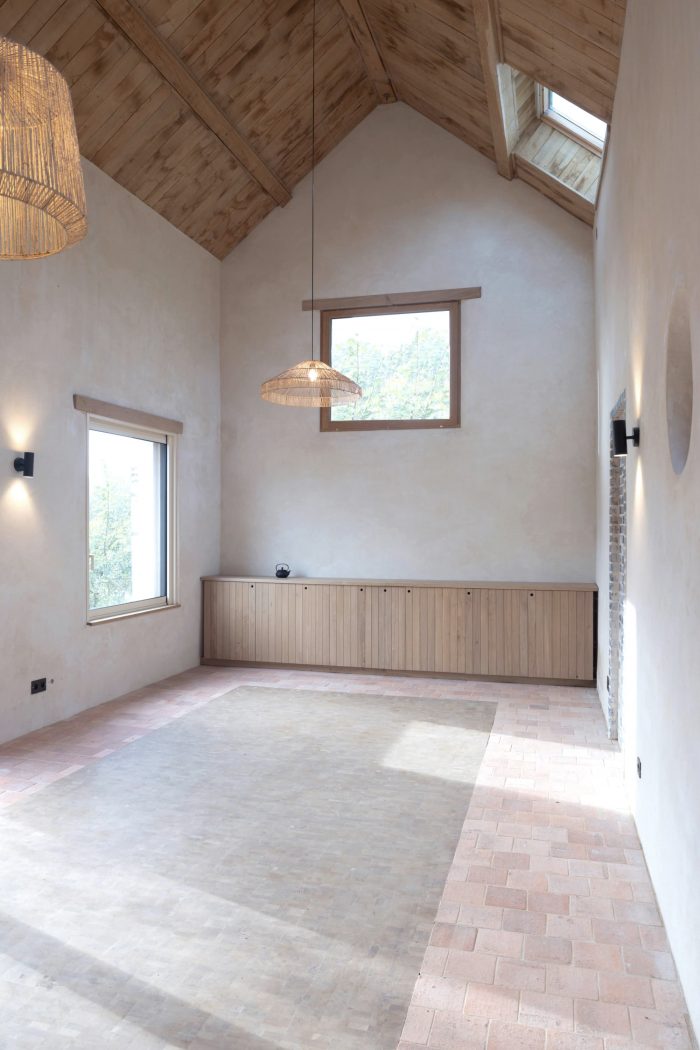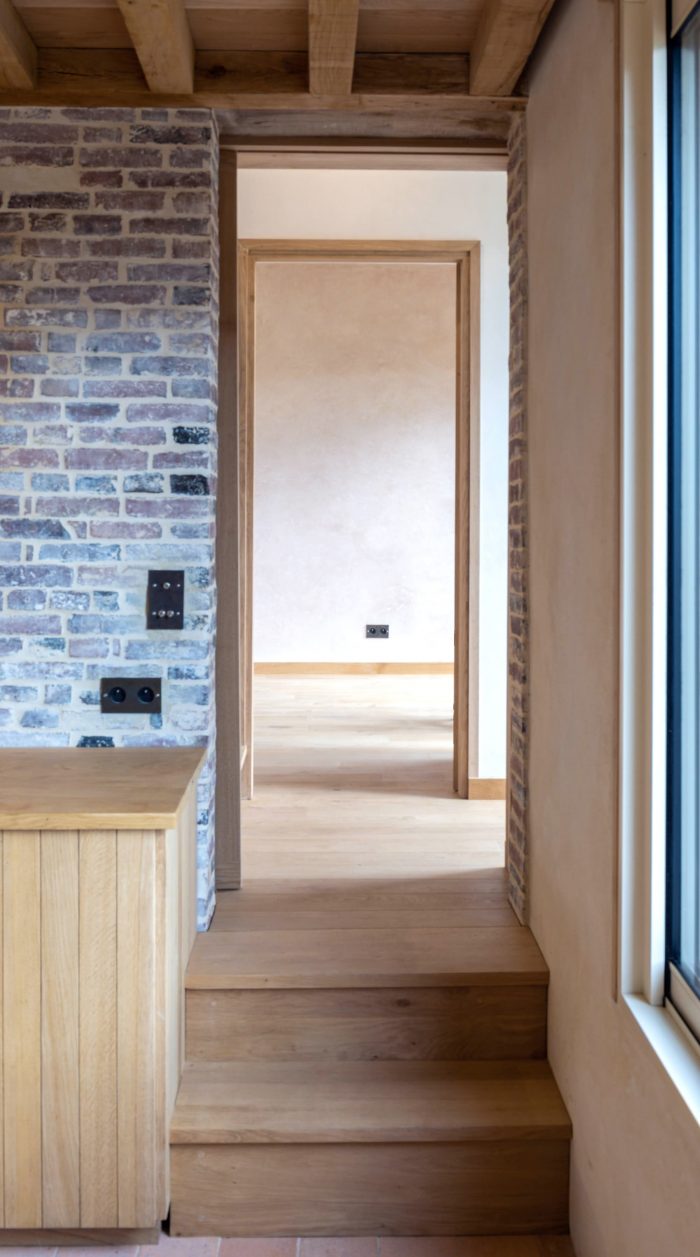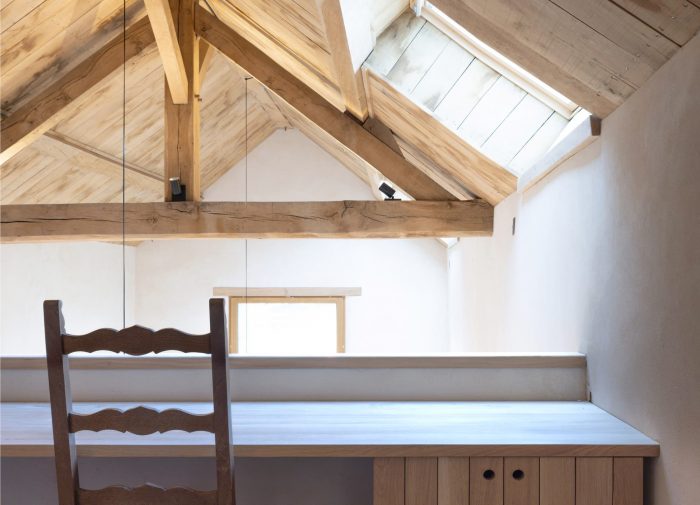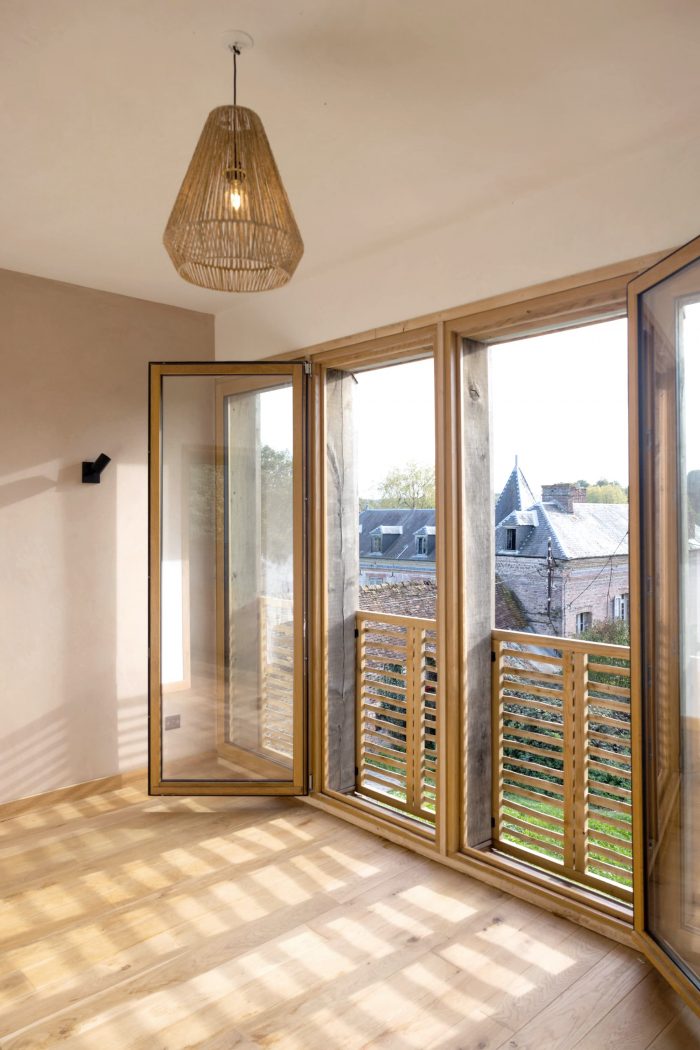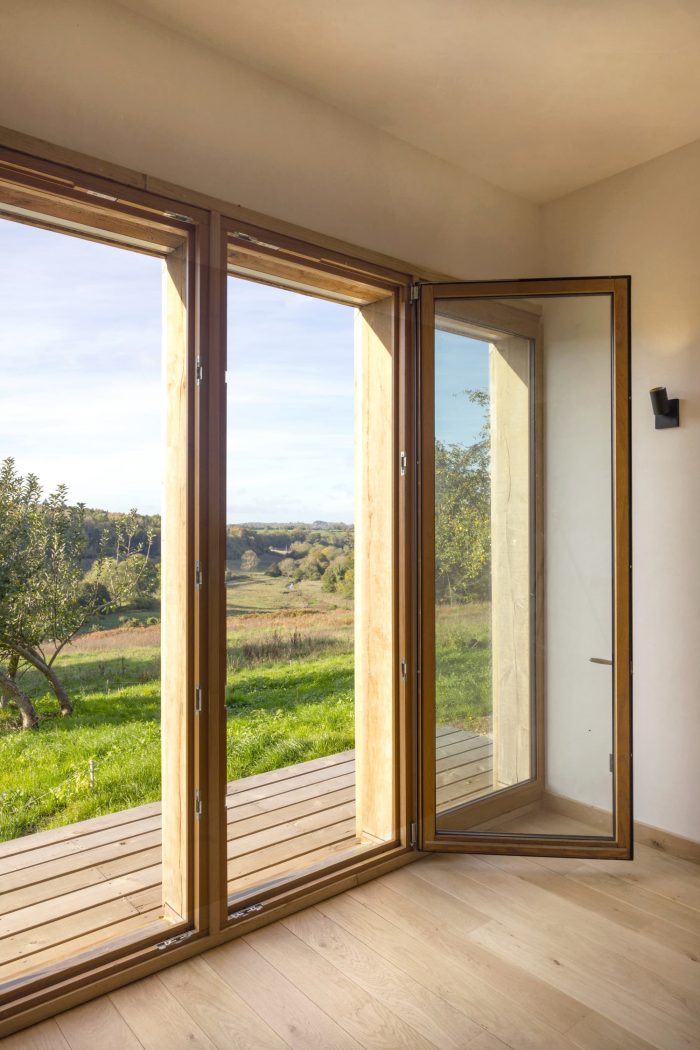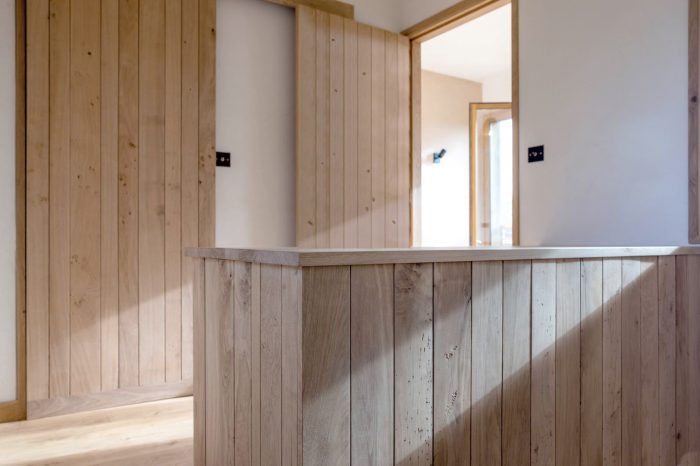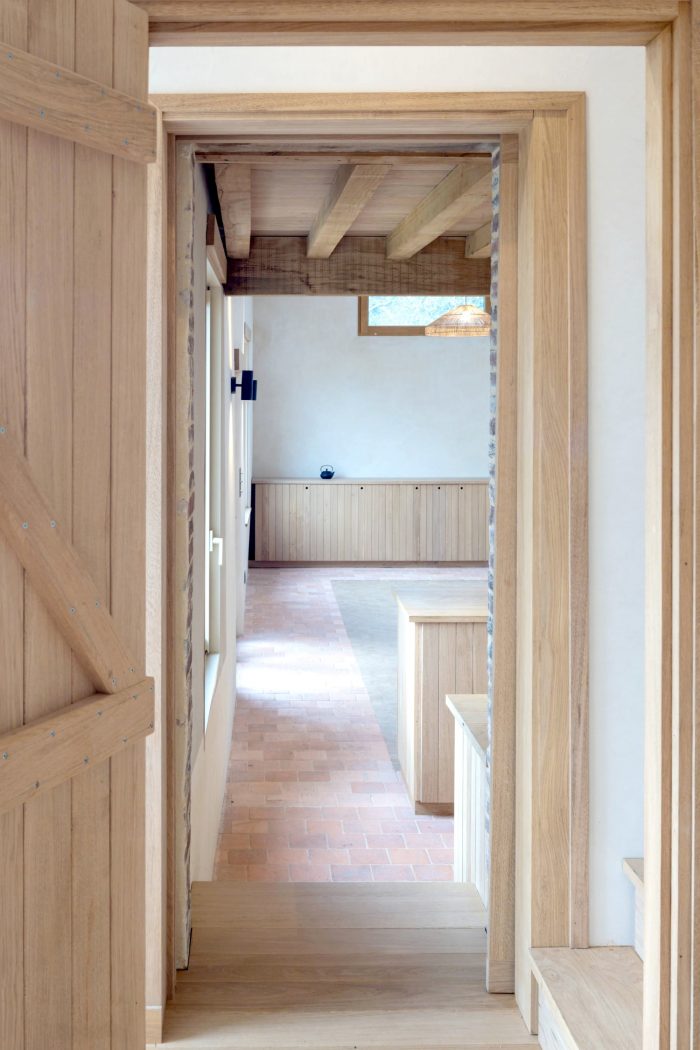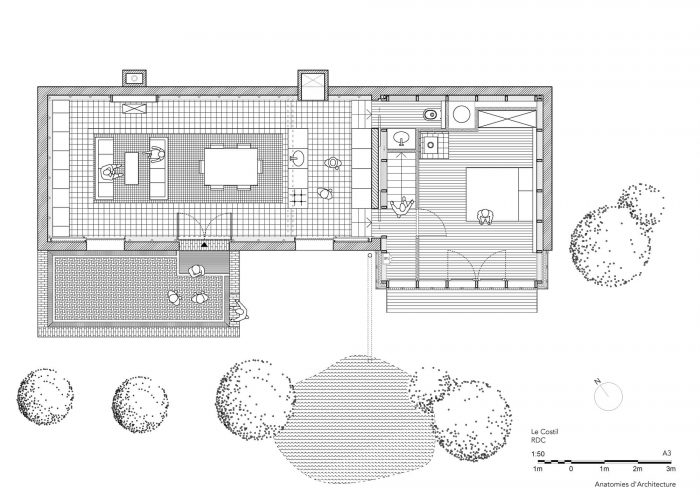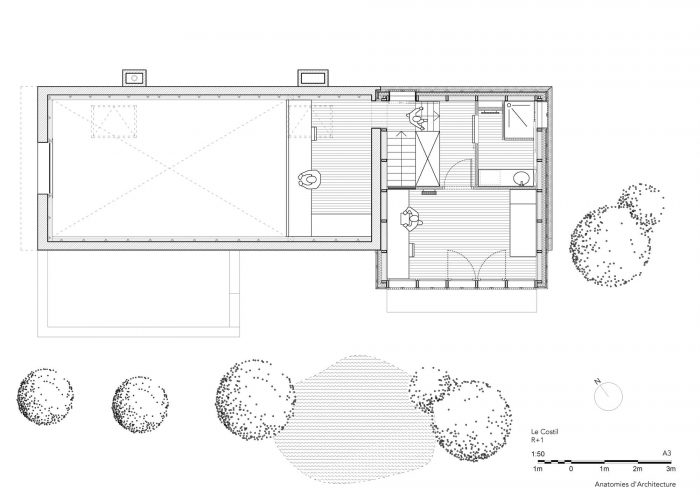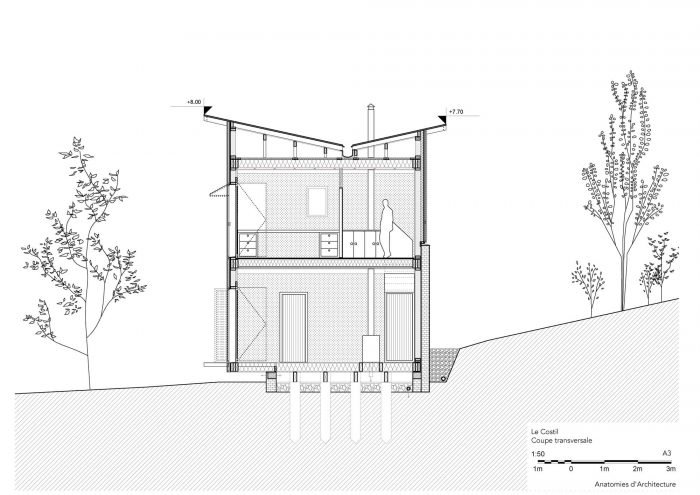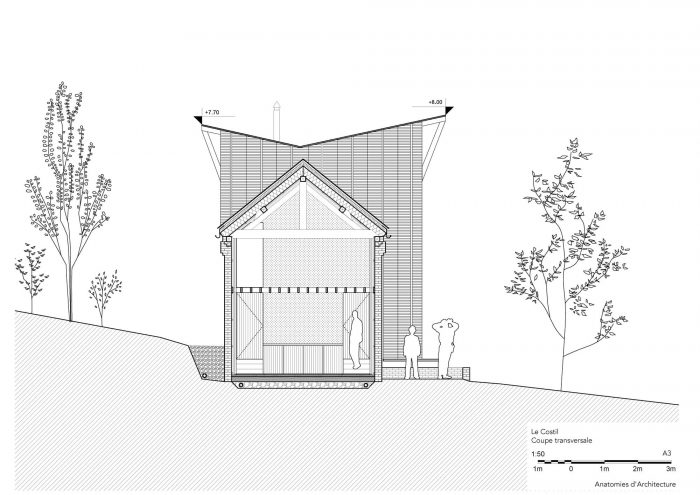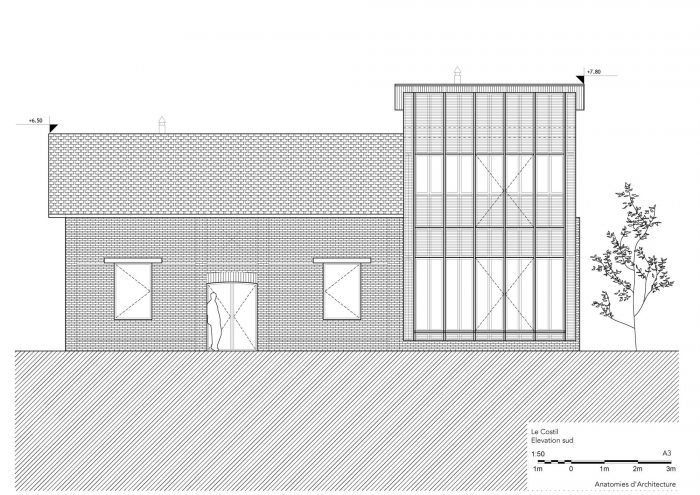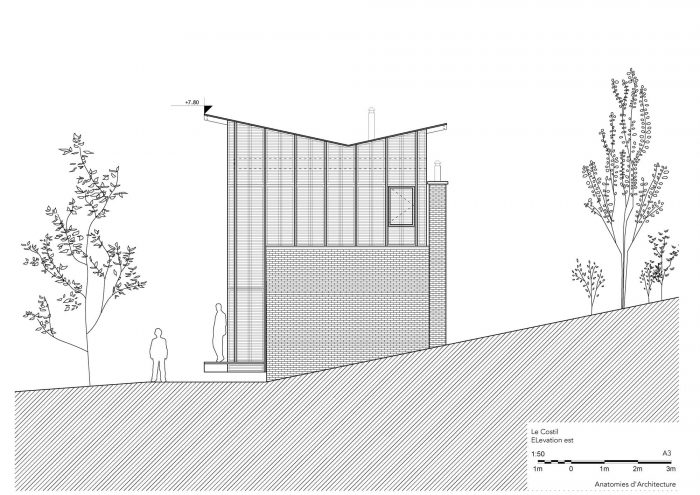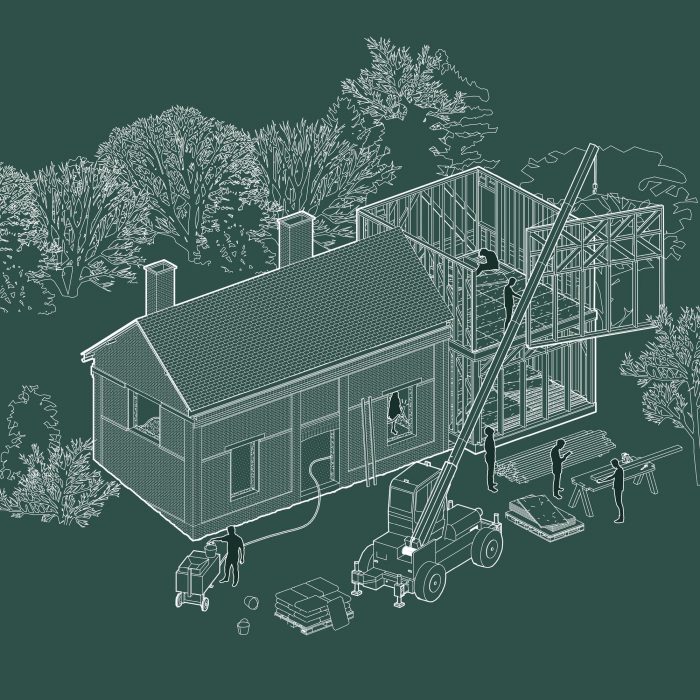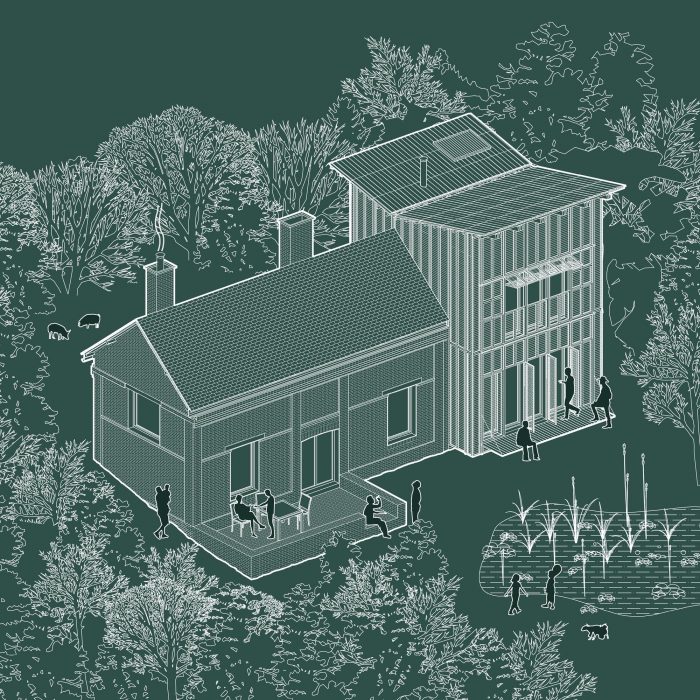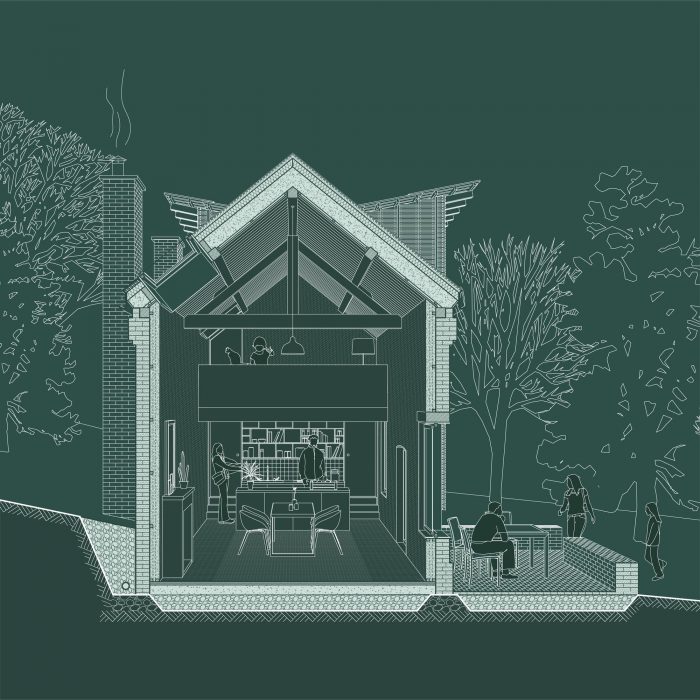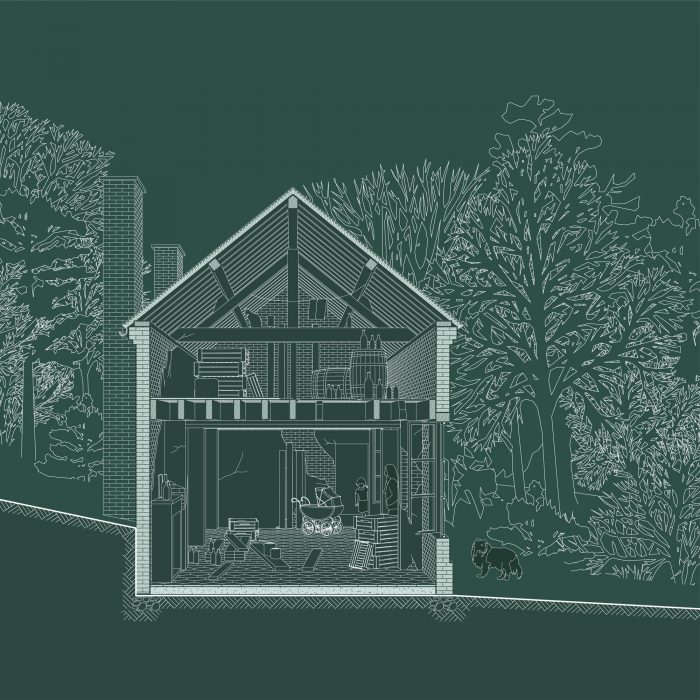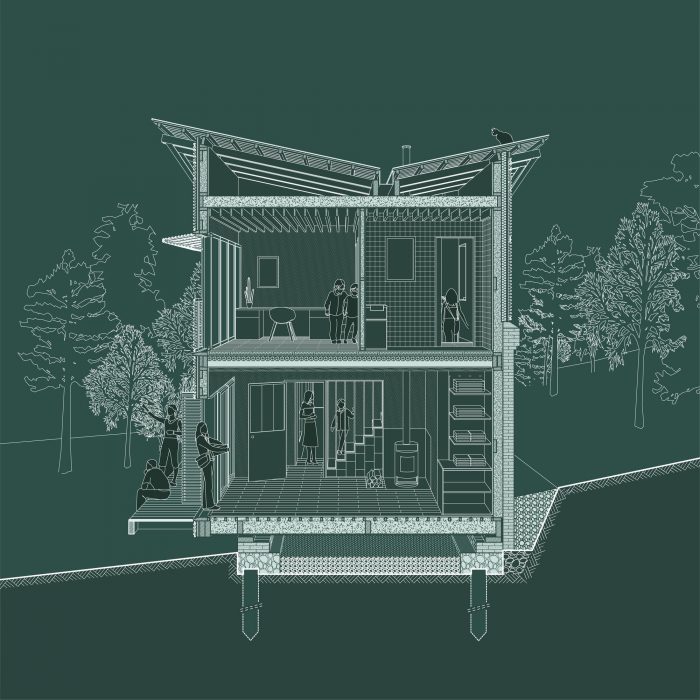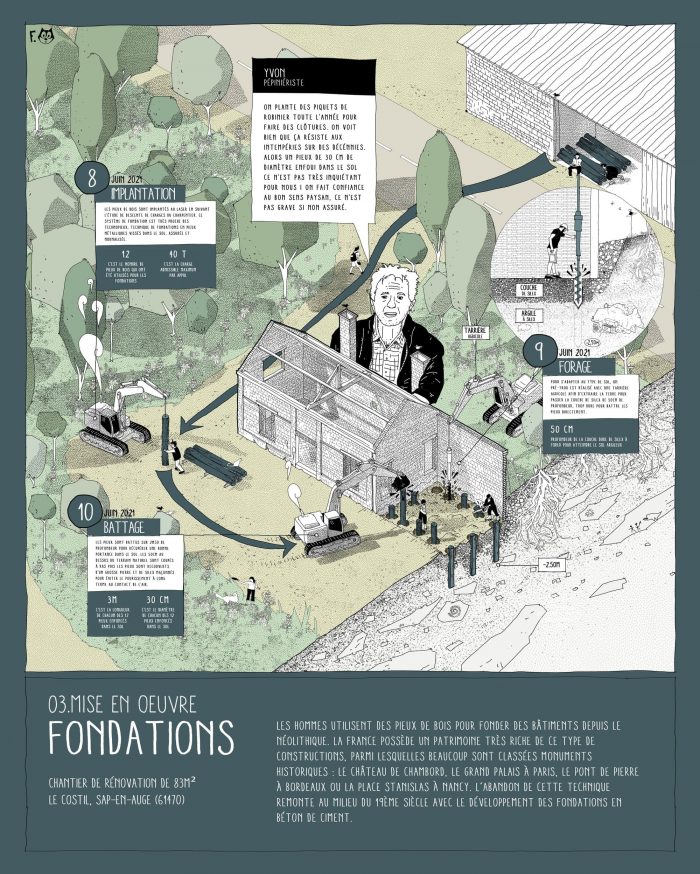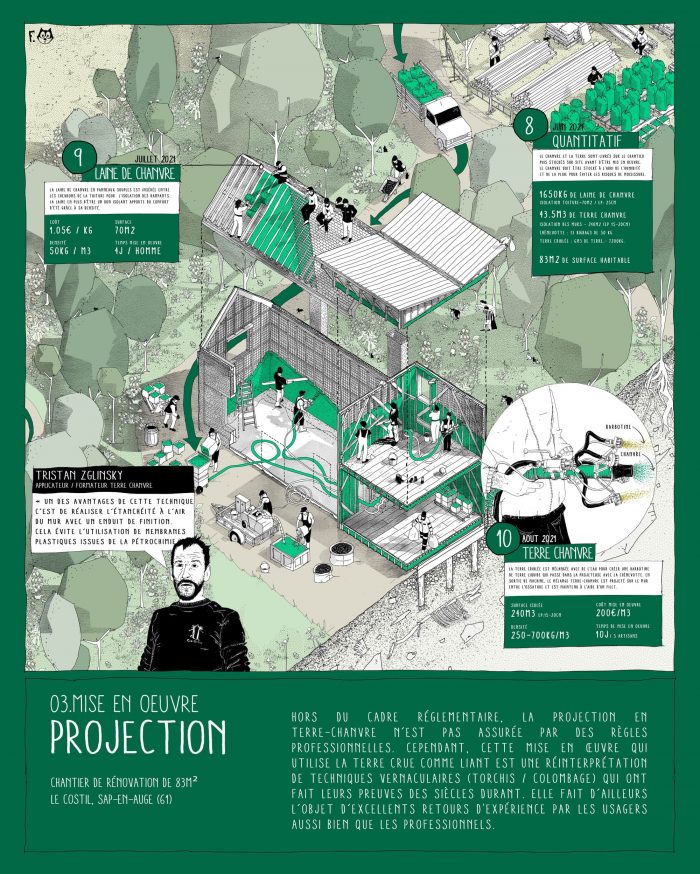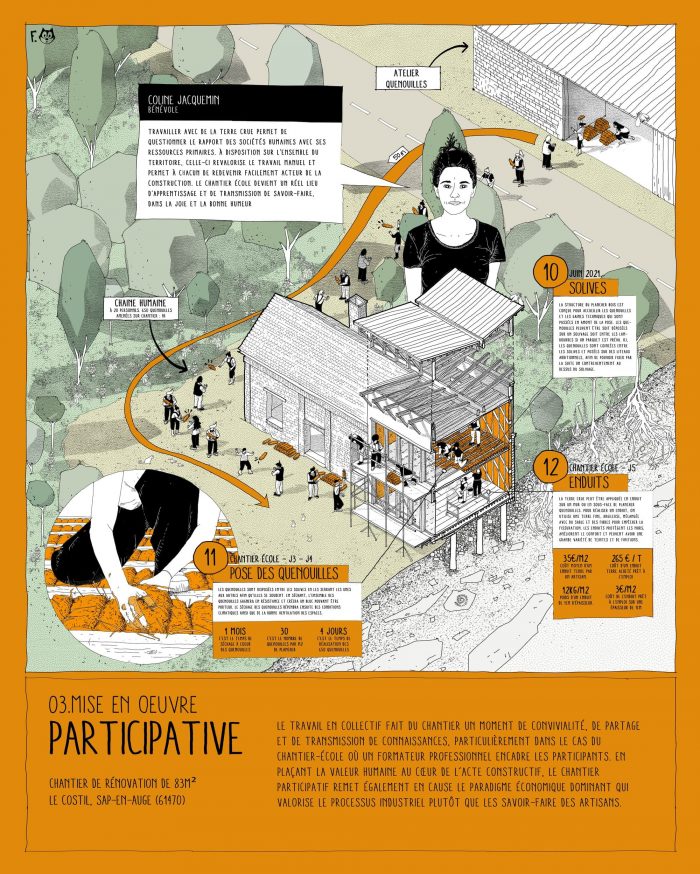如何将我们的家园建设行为重新语境化?换句话说,如何将我们的栖息地与它的领土重新联系起来,考虑到它的特殊性和资源:气候、地理、历史、建筑遗产、当地材料和地区建筑技术?如何利用这种重构的优势,为人类世的生态挑战提供建筑上的回应?
How to recontextualize the act of building our homes? In other words, how to reconnect our habitat to its territory, taking into account its particularities and resources: climate, geography, history, built heritage, local materials, and regional building techniques? And how to take advantage of this recontextualization to provide an architectural response to the ecological challenges of the Anthropocene epoch?
通过诺曼底(法国)的 “Le Costil”,Anatomies d’Architecture提议通过独特的实验来处理生态建设。一座83平方米的传统砖房(或称 “longère”)的改造具有前所未有的雄心壮志:0%的混凝土,0%的塑料,100%的天然材料来自于半径小于100公里的范围。
With “Le Costil”, in Normandy (France), Anatomies d’Architecture proposes to approach ecological construction through unique experimentation. The renovation of an 83m² traditional brick house (or “longère”) with unprecedented ambitions : 0% concrete, 0% plastic, and 100% natural materials from within a radius of less than 100 km.
大麻绝缘材料、原土涂料、当地栗树和橡树制成的木质框架、传统砖块的再利用、回收的瓶塞、槐树树干制成的地基、重复使用的木窗制成的地板……在过去的两年里,Anatomies d’Architecture进行了施工,同时不断尝试为传统建筑寻找替代和本地解决方案。
Hemp insulation, raw earth coatings, timber frames made of local chestnut and oak tree, reuse of traditional bricks, recycled corks, foundations made of locust tree trunks, floors made of reused wood windows… for the past two years, Anatomies d’Architecture carried out the construction while constantly trying to find alternative and local solutions to conventional buildings.
这个项目之所以能够实现,要感谢诺曼底的杰出人士,他们每天都在为保护当地和传统的手工艺、祖传的做法、地区团结和短路而奋斗:农民、伐木工人、锯木工人、采石工人、石匠、历史学家、研究人员、学徒、志愿者……
This project was only made possible thanks to remarkable people in Normandy that keep fighting every day for the preservation of local and traditional craftsmanship, ancestral practice, regional solidarity, and short circuits: farmers, lumberjacks, sawmills, quarrymen, masons, historians, researchers, apprentices, volunteers…
Architects: Anatomies d’Architecture
Area : 83 m²
Year : 2022
Photographs :Olivier Sabatier
Manufacturers : Couverture Grolleau, Depuis 1920, Eco-Pertica, Scheck & Déco
Architectural Design : Raphaël Walther
Study Architects : Emmanuel Stern
Site Architect : Mathis Rager
City : Sap-en-Auge
Country : France

